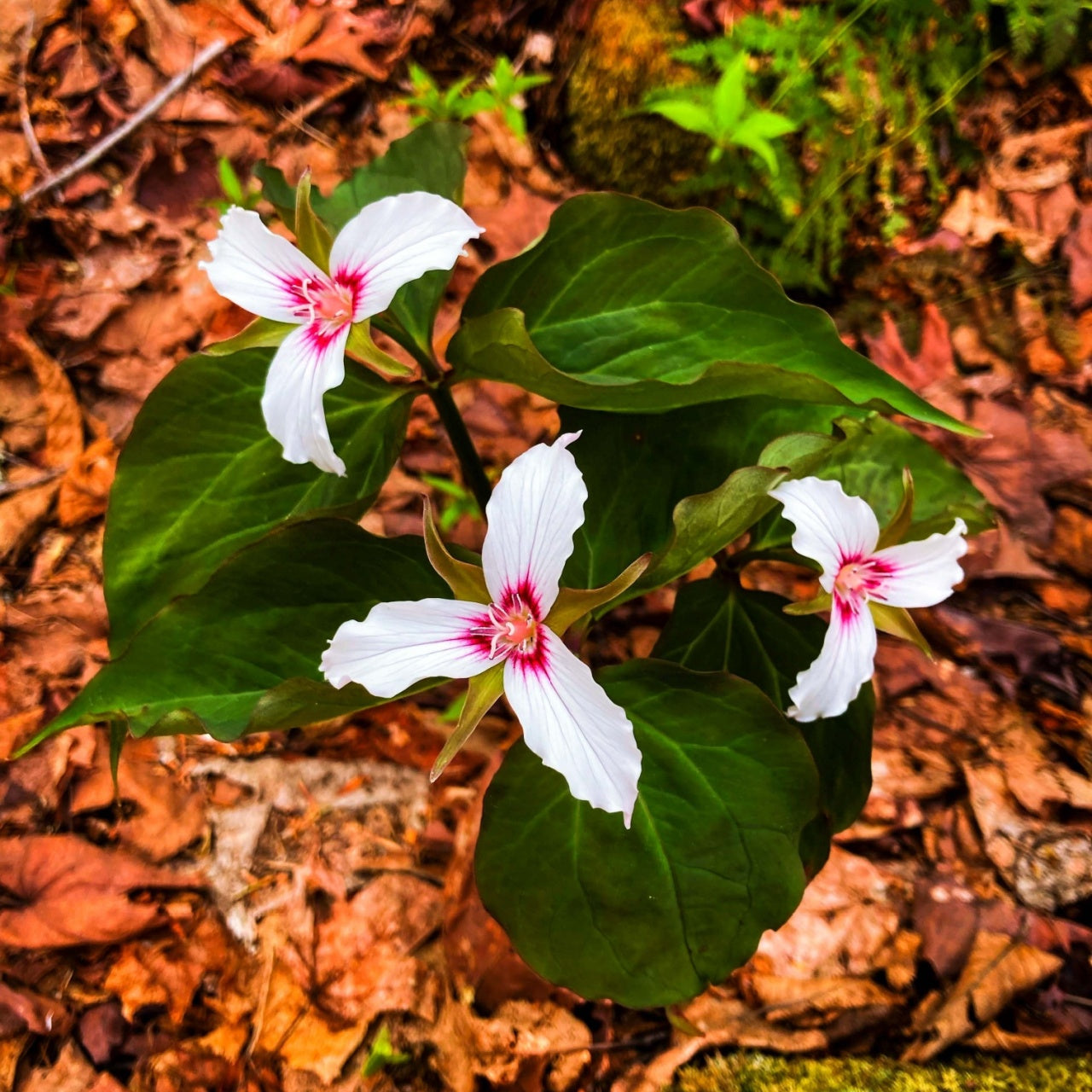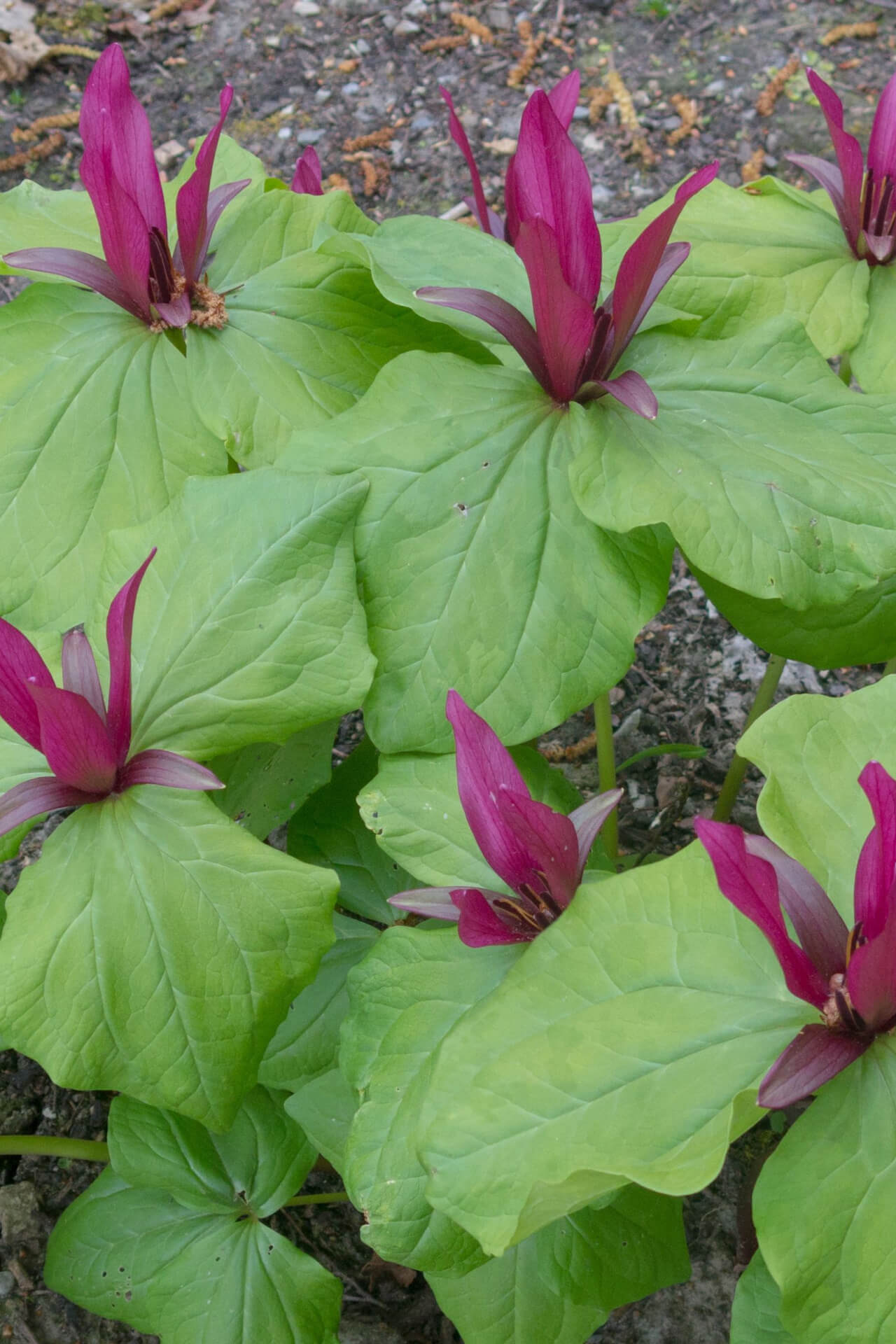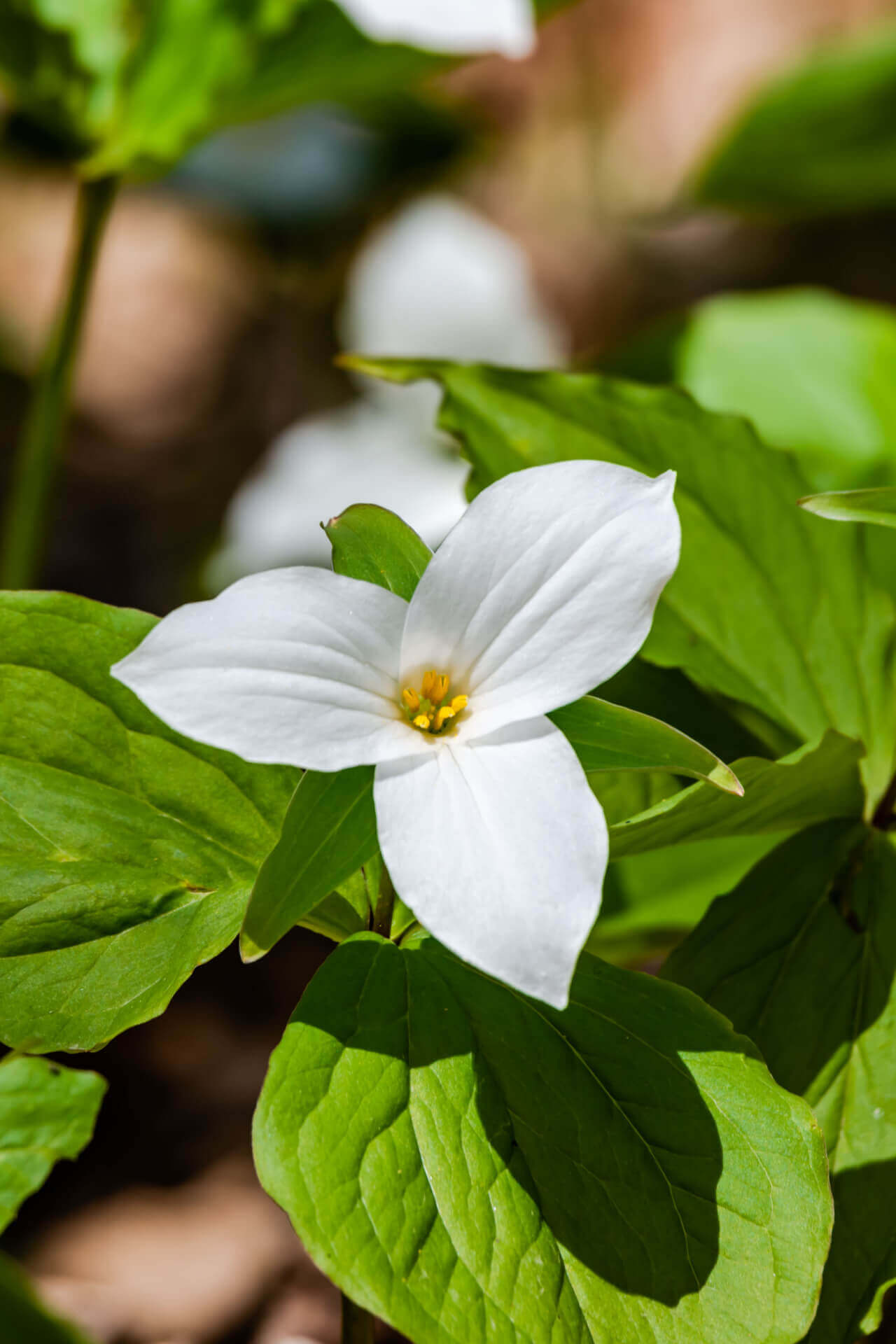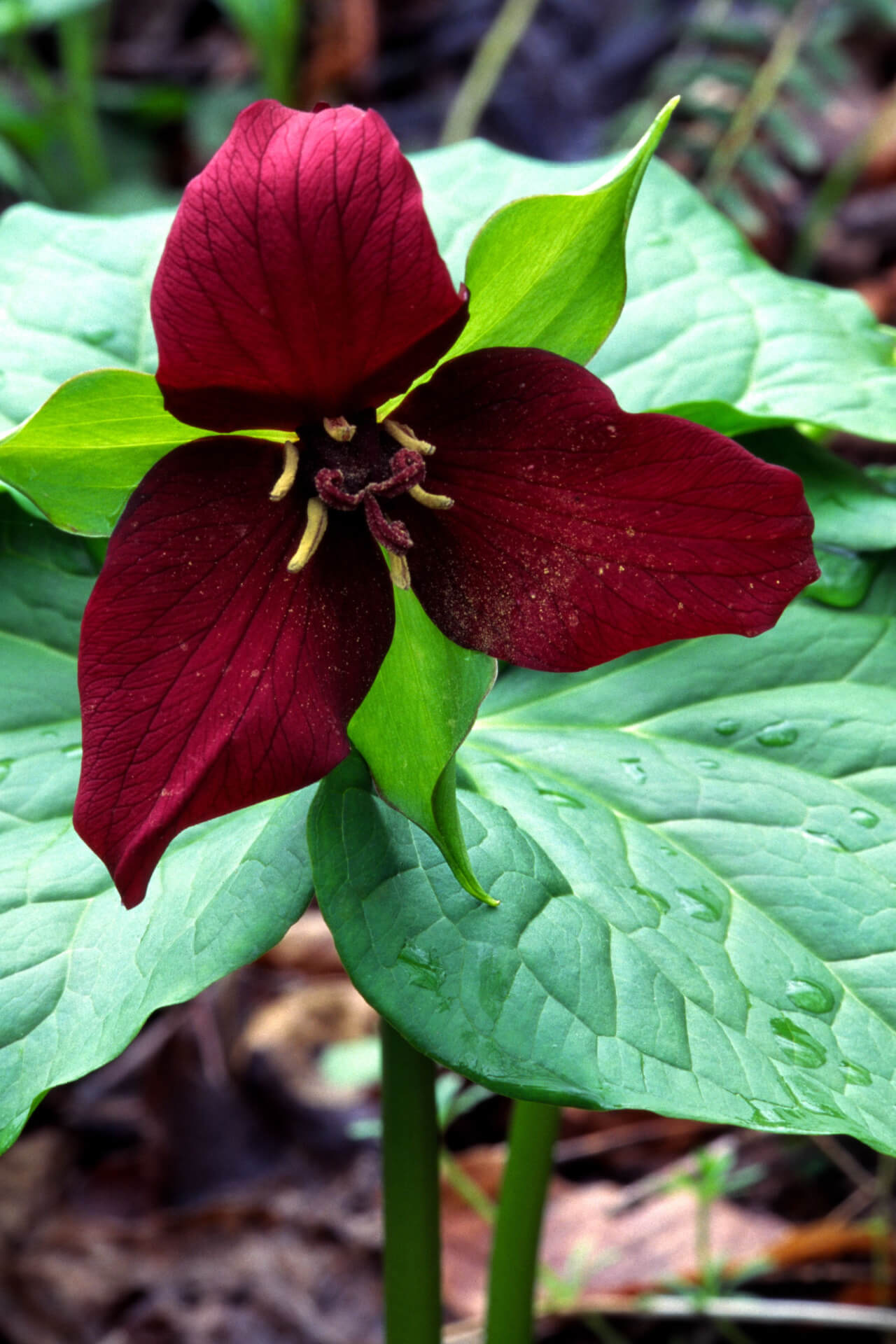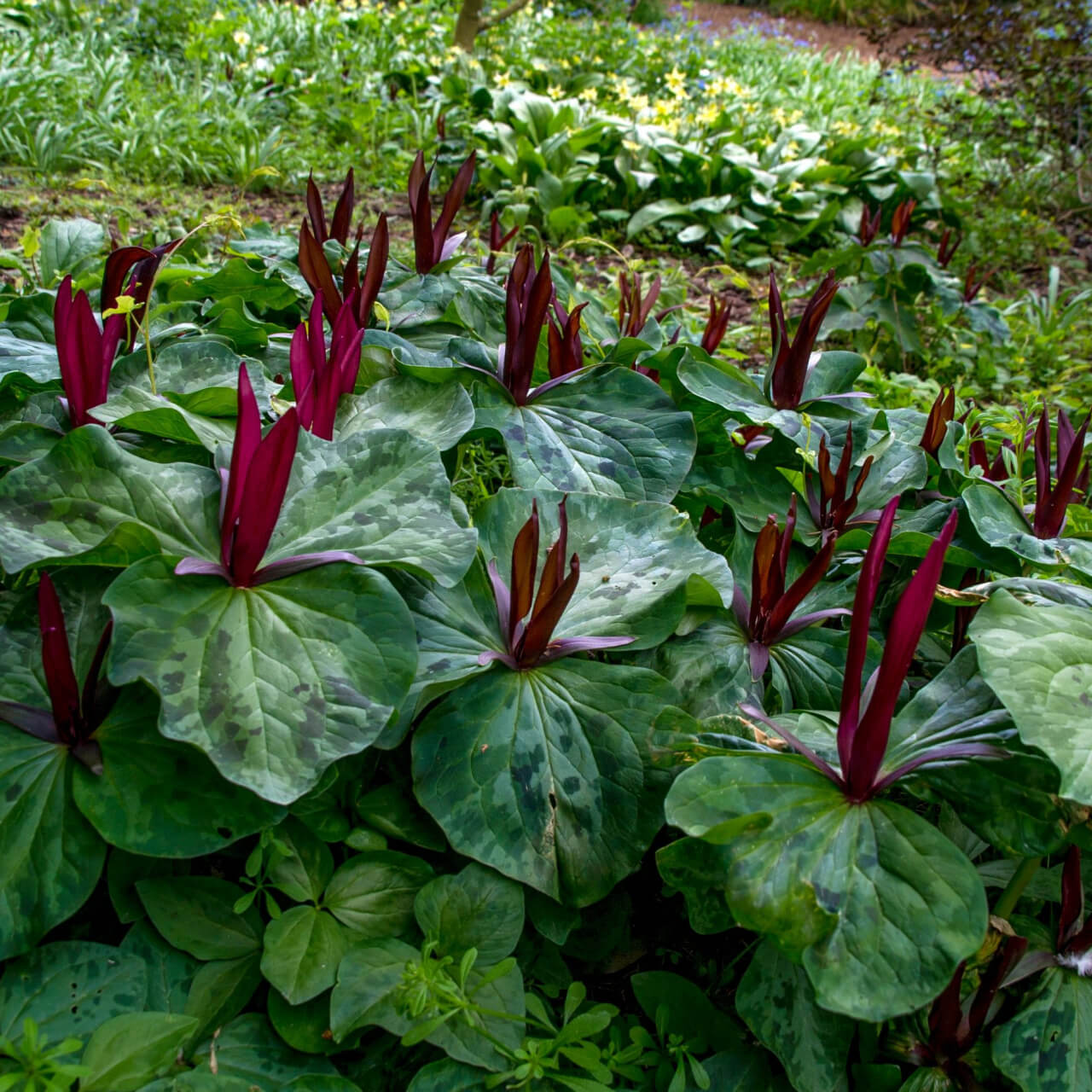Trillium Plants For Sale
Trillium plants are a perennial species with their signature three-petaled blooms and whorled leaves, and are native woodland perennials that bring natural charm to shaded gardens. Beloved for their ability to naturalize and thrive in rich, organic soils, trilliums are a favorite among native plant enthusiasts and conservation gardeners. These spring ephemerals bloom early and fade by midsummer, marking the woodland floor with elegance and seasonal rhythm.
Painted Trillium Characteristics
Painted trillium is one of the most striking varieties, known for its white petals brushed with a deep pink or magenta streak at the center. Its Latin name, Trillium undulatum, refers to the wavy edges of its petals.
Native to acidic, forested regions of the northeastern U.S., it thrives in dappled light and humus-rich soil. Painted Trilium is particularly sought after by woodland gardeners looking to add a touch of artistry to their landscape with minimal maintenance. Learn more about native woodland plants from this educational resource.
Red Trillium (Trillium erectum)
Often called wake-robin or stinking Benjamin, Trillium erectum produces deep red to burgundy flowers and emits a musky scent to attract pollinating flies. This species thrives in moist, shady conditions and is common in eastern North American woodlands. Its bold coloring makes it a dramatic focal point in shaded gardens, and its adaptability makes it an excellent choice for rewilding efforts or native plant borders.
White Trillium (Trillium grandiflorum)
The most recognizable species, Trillium grandiflorum, is a showy, long-lived perennial that blankets forest floors in late spring with large, pure white blooms that gradually fade to pink.
It is the official flower of Ontario and a symbol of conservation efforts across North America. This trillium thrives in loamy, well-drained soils and will slowly spread by rhizome, forming impressive colonies over time. White trilliums are excellent for naturalistic woodland gardens and shady perennial borders.
Pink Trillium (Aging White Trillium or Natural Hybrid)
Many gardeners confuse pink with a separate species, but in many cases, it's simply the white (T. grandiflorum) aging gracefully. As the bloom matures, it turns a soft pink. However, some regions feature natural hybrids or forms that lean more solidly pink. These are equally beautiful and add subtle color variety to trillium groupings. A pink blush in trilliums often signals the plant is nearing the end of its bloom cycle.
Beige or Cream Trillium (Rare Color Forms)
Though rare, some trillium species or natural variations produce blooms in cream or beige tones. These understated blossoms can be found in certain populations of Trillium cuneatum or Trillium sessile. Their earthy hues provide a unique twist on traditional woodland color schemes and are often prized by collectors and native plant gardeners for their rarity and understated beauty.
Grow and Care Tips: Trillium Plants - Woodland Perennials
Trillium plants thrive in USDA zones 4-8, preferring shaded to partially shaded areas with rich, leaf-littered soil. Avoid disturbing the roots and give them time, even though they are slow to establish, but reward your patience with decades of low-maintenance growth.
Keep soil consistently moist but not waterlogged. Mulching with natural leaf compost mimics their native woodland floor and enhances root health.
Exposure
Trillium Plants thrives in dappled or filtered sunlight, ideally under the canopy of deciduous trees. It favors a place with morning sun and afternoon shade, mimicking its natural woodland habitat to maintain optimal moisture levels and avoid scorching.
Height at Maturity
Under 12"
Usage
Pollinator Plant
Shipped As
Bare-root
Ships
USPS
Planting Zones
4-8
